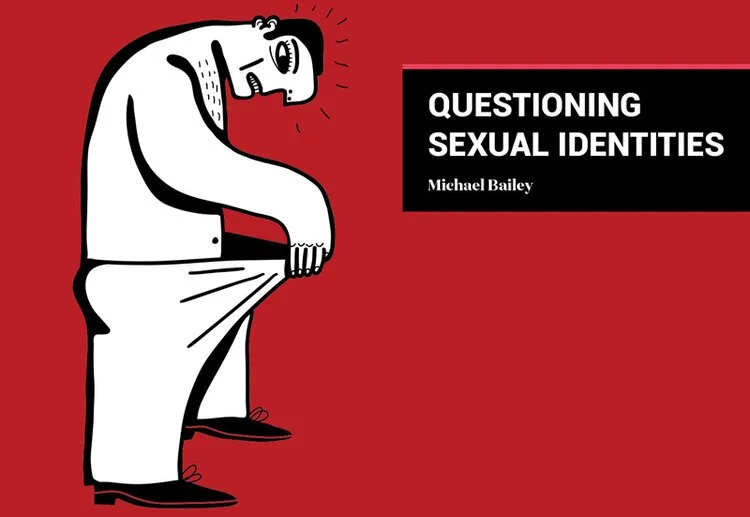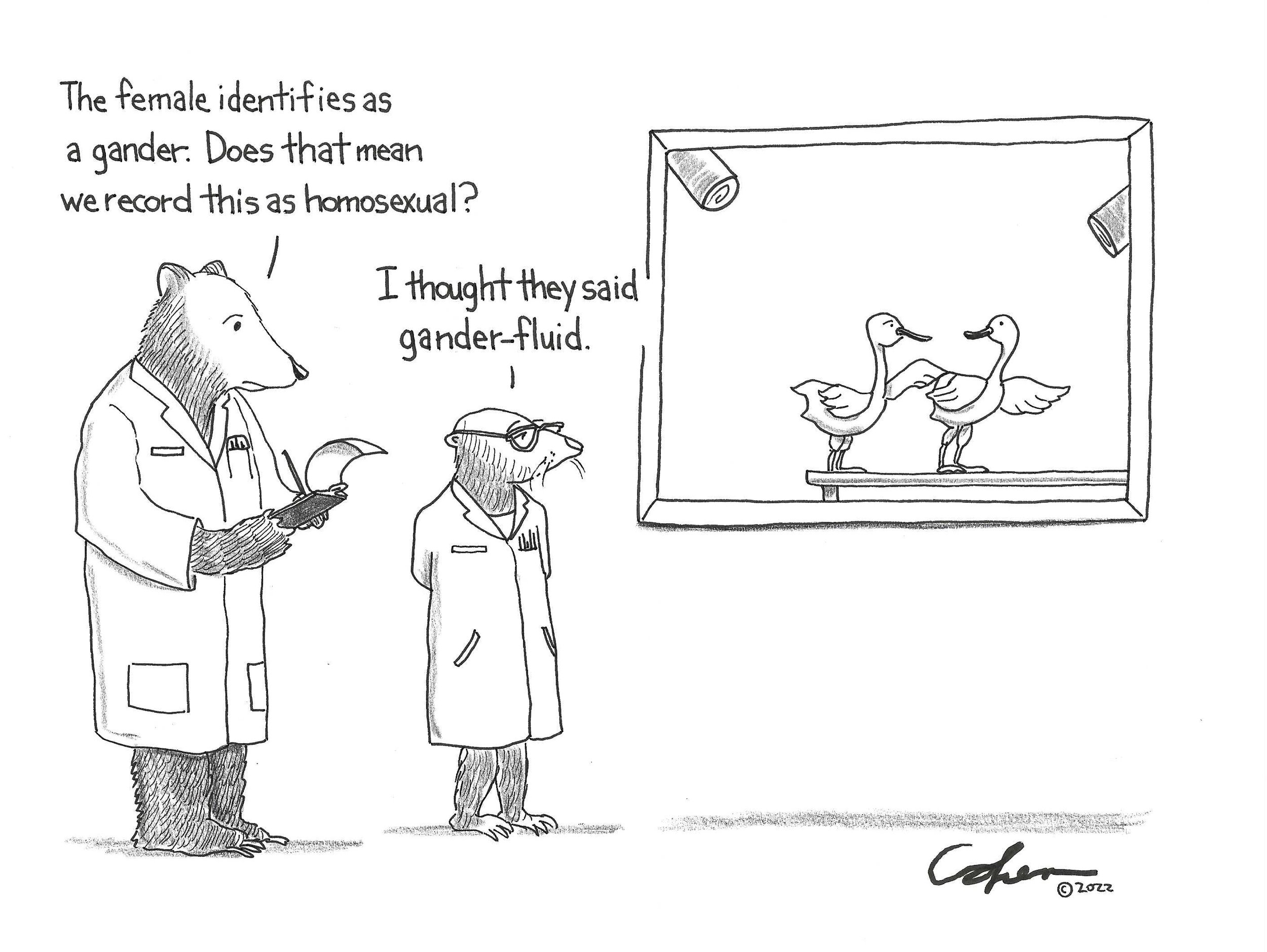Questioning Sexual Identities
Bisexual people, transgender individuals, adult babies and diaper lovers, furries, gynandromorphophiles (men attracted to trans women with penises), pedophiles, voluntary eunuchs, and straight crossdressers — I have studied them all. To what end? Why should anyone study persons with unusual sexual identities? There are two reasons that motivate researchers, and, as far as I can tell, they never coexist in the same researcher, because they cannot.
When I study unusual sexual identities, I want to understand them. For instance, what is their underlying motivation? Do people often possess more than one, or do they shift from one to another? I am also interested in the ways that sexual identities inform broader questions. For example, is there any value to concepts such as “paraphilias” (atypical sexual arousals formerly referred to as “sexual perversions” or “deviations”) or “erotic target identity inversions” (i.e. paraphilias that involve the person themselves being whatever object their sexual desires are centered on)?
The other reason to study sexual identities is to protect them and promote their interests. To do so, one must first know (or at least believe one knows) these interests. Then, one’s research questions and results must be constrained so that they are consistent with said interests — no asking awkward, uncomfortable questions. And definitely, no reaching conclusions disapproved of by members of the protected identity groups!
From this explanation, it should be obvious that the two motives for studying sexual identities can, in principle, conflict. My own experience has confirmed this. Several times, I have offended sexual minorities by questioning aspects of their identities. For example, in 2003, I published a book, The Man Who Would Be Queen, a popular science book where I wrote about psychologist Ray Blanchard’s theory that there are two types of natal males who become women: one who is essentially a very feminine homosexual male, and the other who is motivated by the sexual fantasy of being female. Some trans women disliked this theory so much that they tried to get me fired.
A similar situation occurred in 2005 when my team published a research article examining whether self-identified bisexual men showed a bisexual arousal pattern in the laboratory. That is, did men who said they were attracted to both men and women become sexually aroused (as measured by their erections) when watching both male and female pornography? We found no evidence that they did. After the New York Times wrote about our study, we were denounced by activists.
More recently, my laboratory has encountered resistance in studying furries. Some furries disliked our surveys and accused us of nefarious goals.
Do I dislike sexual minorities? Enjoy hurting their feelings? Want to return us to our Puritanical past? If not, why have I repeatedly offended so many in these groups? My answers are “no”, “no”, “no”, and “because I try to do good science”. Let me explain.
The purpose of science is to acquire new knowledge. The best science advances knowledge about important matters. In general, issues are controversial because they are important and unsettled. Sexual minorities tend to be scientifically controversial in this sense.
For example:
“Autogynephilia” — a natal male’s sexual arousal by the idea of being a woman — is endorsed by many transwomen. It is also hated by many others. Is autogynephilia helpful in explaining some kinds of transgender phenomena?
Many gay men go through a stage in which they identify as bisexual. Surveyed afterward, they have usually acknowledged that their feelings have always been homosexual, not bisexual, and that their bisexual identification was done for social — not sexual — reasons. Do some bisexual-identified men have actual bisexual feelings?
Furries have sometimes denied sexual motivation, and their hotel conventions are often portrayed as “family friendly.” But their websites often have a strong erotic element. Are furries sexually motivated or not?
Why wouldn’t we want to know the answers to these questions?
The fact that some persons might not like our answers is a good thing to consider before deciding whether to get involved because people vary in their tolerance of disputes and drama. But it is not a valid reason to discourage good faith efforts to find out what is true. Imagine a world in which potential disagreement and hurt feelings were sufficient to prevent the study of an issue. We might still believe the sun revolves around the earth! We would certainly not believe that humans evolved from earlier non-human animals. And in all likelihood, we would be no happier in ignorance than we are now, with the “forbidden” knowledge.
If we can agree with the Faber College motto that “Knowledge is good,” the question remains: how should we obtain it? A good start is by talking to members of the sexual minority groups we want to study because they are a good source of data and ideas. But we cannot assume that everything these members say is true.
For one, members of a sexual minority do not always speak with one voice. For instance, some transwomen believe that autogynephilia is important in their gender identity; others, who superficially seem quite similar, emphatically reject this possibility. Deciding what is true requires more than these diverging opinions.
Another reason we cannot simply rely on what members of sexual minorities say is that self-reporting is limited in various ways. For example, people are often unaware of some of their own motivations. Sometimes people don’t want others to know things about them. Sometimes people hold mistaken ideas about themselves. In a wonderful essay entitled “Psychology is About Invalidating People’s Identities”, the (pseudonymous and autogynephilic) author, M. Taylor Saotome-Westlake writes: “If introspection were sufficient to reveal the true structure of human psychology, it's not clear why we would even need to do science; we would just know.” Indeed. But psychological science is both necessary and difficult, even in the domain of identity.
Science is the best way to advance knowledge, and this includes knowledge about sexual minorities and sexual identities. Activists have goals besides advancing knowledge; thus, science and activism are often at odds. The objective pursuit of knowledge requires a neutral, uncommitted allegiance to facts, whatever they may be. Someone who commits to making an interest group happy cannot be trusted to do good science. And why should anyone trust research published by activists? The results can be known in advance.
Science has too often been opposed by activists who advocate for sexual minorities. Activists make two common mistakes. First, they tend to see bad motives in scientists whose research they don’t like. Occasionally this is warranted, but more often it is not. People who don’t like a particular sexual minority will usually make that clear, and conducting research studies is not a very efficient way for such people to harm that minority. Those who insist they are conducting research to find out the answers to questions are generally telling the truth.
A second common mistake activists make is exaggerating or overestimating the negative consequences of ideas they don’t like. Throughout history, the assertion that certain ideas will ruin the world has been used to suppress them. But hell on earth has not resulted from ideas, for the most part — instead, it has more frequently been borne out of their suppression.
Let me conclude with a more hopeful example — actually, a beautiful example — of what can happen when scientists and activists collaborate with the common goal of advancing science.
After our 2005 study of male bisexuality, I was approached by John Sylla, President of the American Institute of Bisexuality (AIB). John did not agree with our conclusions and had some criticisms of our study. For instance, we recruited many of our participants through advertisements that mainly catered to gay men (there were few publications at the time that focused on bisexual men). He reasonably worried that this might bias our sample to have an excess of bisexual-identified men who were, in fact, homosexually oriented. He had other concerns as well. We went back and forth. We argued. We met. Ultimately — and unbelievably, to some — John persuaded the board of the AIB to fund my laboratory to do another study of bisexual men. John even helped design the new study (although he had no input once we began recruiting participants). When we analyzed the data, I was surprised (but not displeased) that this time we found bisexual responses among bisexual-identified men.
My laboratory and the labs of my former students have continued to study this topic because we have not considered it decisively answered. Recently, we combined all the data we have collected — a total of nearly 600 men, many of them from research funded by the AIB. The results of this analysis are definitive. Because this research is being reviewed by a journal, I cannot comment further at this time, but I can say that I think bisexual men will be happy. At the same time, I will say that we conducted this new study without knowing in advance what it would reveal. Had the results turned out the opposite, I would still happily publish them. Because knowledge, itself, is good.
Published in Issue VI: Identity











